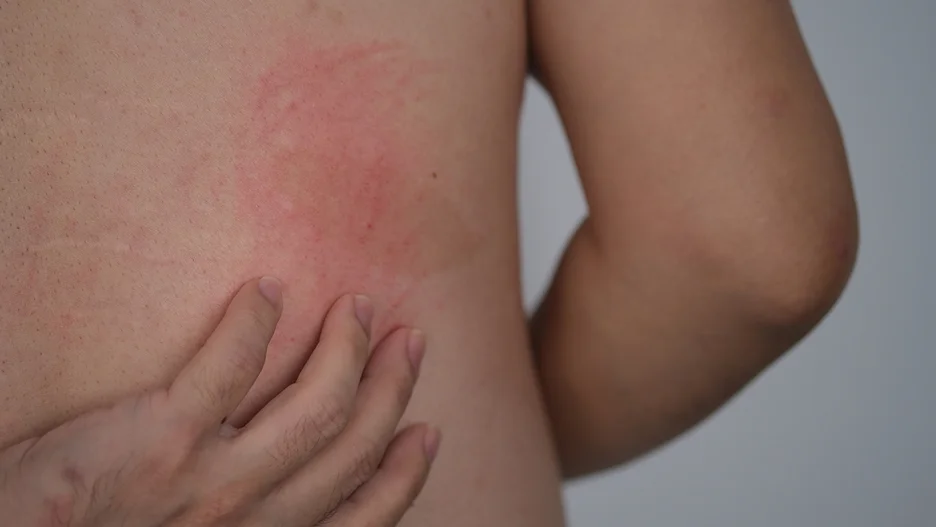A Potential Enzymatic Influence on Histamine Levels and Allergic Responses
Allergies and intolerances are on the rise globally, with an estimated 10-30% of the world’s population affected by allergic diseases. A key chemical that drives many allergic reactions is histamine. This inflammatory compound is released by immune cells during an allergic response, leading to common symptoms like rashes, runny nose, watery eyes, hives, and wheezing.
While antihistamines provide symptomatic relief by blocking histamine receptors, another potential strategy is to influence the enzymes involved in histamine metabolism. One such enzyme is diamine oxidase (DAO), which breaks down histamine and other biogenic amines like putrescine and tyramine. DAO activity is found to be reduced in some individuals with histamine intolerance.
The Connection Between Pantetheine and Diamine Oxidase
An interesting link has been made between pantetheine, a derivative of vitamin B5, and DAO activity. When pantetheine is broken down into cysteamine, it then condenses with oxygen to form the functional DAO enzyme. This points to pantetheine as a potential method of modulating DAO activity and reducing histamine levels.
DAO is considered an amine oxidase due to its ability to catalyze the oxidative deamination of amines like histamine, putrescine, and tyramine. It breaks these compounds down using oxygen to produce aldehyde, ammonia, and hydrogen peroxide as byproducts.
This oxidative deamination activity is vital for regulating amine levels and mitigating their toxic effects if allowed to accumulate. DAO’s prime role seems to be preventing the buildup of histamine and other biogenic amines.
Diamine Oxidase’s Structure
The crystal structure of DAO reveals it to be a homodimeric protein, meaning it consists of two identical subunits. Each subunit contains one non-covalently bound flavin adenine dinucleotide (FAD) cofactor, which is central to carrying out the oxidation reaction.
The enzyme has two distinct channels leading to the active site where amine oxidation takes place. The architecture of the narrow substrate access channels allows only small monoamines and diamines to enter and bind to the active site.
Active Sites and Catalytic Activity
DAO contains two symmetrically arranged active sites, each within one subunit of the homodimer. The active site contains the FAD cofactor, which reacts with an amine substrate through its N5 atom.
A key amino acid involved is a conserved lysine residue, which stabilizes reaction intermediates. Other neighboring residues assist with substrate binding and orientation for optimal catalytic activity.
Overall, the shape and amino acid configuration of DAO’s active sites allows it to efficiently catalyze amine oxidation. Modulating its expression and activity could potentially influence histamine metabolism.
Biochemical and Kinetic Studies
Like other enzymes, DAO displays typical Michaelis-Menten kinetic behavior. Its rate of reaction increases proportionally with substrate concentration until it becomes saturated.
Studies show that DAO has the highest catalytic efficiency with histamine as a substrate. Its catalytic rate with histamine can be described by a rate constant of 34 per second when measured at pH 7.5 and 37°C. This rate slows by over 90% at pH 5 due to altered ionization of key active site residues.
DAO also possesses a measurable background rate in the absence of substrate. This basal activity may maintain constant hydrogen peroxide production for intracellular signaling purposes.
Interactions with Specific Compounds
| Compound | Interaction |
| 1. Histamine | As its prime substrate, histamine is rapidly oxidized by DAO with a kcat of 34 s-1 at normal pH. The enzyme’s affinity for histamine is also high, with a Km of approximately 74 μM.This kinetic profile allows DAO to efficiently scavenge and degrade even low concentrations of histamine, making it well-suited for regulating systemic and localized histamine levels. |
| 2. Putrescine and Tyramine | Besides histamine, DAO can also degrade the diamines putrescine and tyramine. However, it has a lower affinity and catalytic efficiency with these substrates compared to histamine.For putrescine, DAO’s Km is 850 μM, over 10 times higher than with histamine. Tyramine is oxidized even slower, with a Km of 2100 μM.So while DAO acts on multiple amines, its preferential kinetic activity with histamine makes it well-poised to influence allergic responses. |
| 3. Biogenic Amines | In addition, DAO has also been shown to deaminate other biogenic amines like tryptamine, phenethylamine, and spermidine.However, it has a lower affinity for these larger and more structurally complex amines. DAO seems optimized by evolution to act as a sentinel against small inflammatory amines like histamine, putrescine, and tyramine. |
Role in Cellular Function and Health
Interaction with Immune Cells
DAO is found in high concentrations in intestinal epithelial cells, which are exposed to dietary amines. It is also expressed by circulating basophils involved in mediating allergic reactions.
By modulating histamine levels around basophils and mast cells, DAO may regulate the intensity of inflammatory responses. DAO secretion from intestinal cells may also mitigate post-meal spikes in circulating histamine.
Production of Hydrogen Peroxide
The oxidative deamination of amines by DAO generates hydrogen peroxide as a byproduct. At low levels, hydrogen peroxide acts as a signaling molecule. However excess levels can cause oxidative stress.
The anthranilate oxidase activity of DAO may balance hydrogen peroxide production with the generation of antioxidants like kynurenic acid. More study is needed to fully understand this aspect of DAO activity.
Differences in Tissue Levels
DAO expression varies across human tissues, suggesting specialized functions. Levels are highest in intestinal mucosa, kidney, and placenta. Lower activity is found in serum, liver, lungs, and brain.
The reason for these tissue-specific differences in DAO levels is not fully clear. Although it may relate to the need to metabolize amines from dietary sources in the gut, prevent systemic amine accumulation in the kidney, and protect the fetus in the placenta.
Cell Wall and Secondary Structure Elements
DAO is an extracellular enzyme attached to cell surfaces, allowing it to intercept circulating amines. The amino acid sequence contains a hydrophobic region that anchors the enzyme to membranes.
The crystal structure also reveals several alpha-helix and beta-sheet regions that give the enzyme structural stability for withstanding shear forces while attached to cells.
Implications in Health Conditions

Oxidative Stress
While essential at basal levels, hydrogen peroxide produced by DAO could potentially cause oxidative stress if overproduced. However, DAO’s anthranilate oxidase activity may counterbalance this by yielding antioxidants.
By simultaneously generating peroxide while activating antioxidant pathways, DAO may coordinate controlled redox signaling. Further research is needed to elucidate its antioxidant role.
Ulcerative Colitis
Altered DAO activity and amines like histamine are associated with ulcerative colitis, an inflammatory bowel disease. Histamine induces gut permeability and secretion.
DAO supplementation has been proposed as a treatment, but human studies are still limited. Nonetheless, modulating intestinal DAO levels shows promise for mitigating inflammation in certain gastrointestinal conditions.
Role Against Histamine
By scavenging and degrading histamine, DAO counterbalances histamine-releasing pathways to prevent over-accumulation. Insufficient DAO activity could lead to histamine buildup and symptoms of intolerance.
Supplementing with pantetheine, a DAO precursor, may promote histamine metabolism in individuals with low endogenous levels. More human research is still needed to confirm the benefits.
Role in Insulin Signaling
Beyond allergies, emerging evidence also points to the role of DAO in insulin release and glucose metabolism. DAO may modulate glucagon secretion by alpha cells of the pancreas.
Degrading histamine also suppresses inflammatory pathways that contribute to insulin resistance. Boosting DAO activity could thus have far-reaching metabolic benefits.
Associated Compounds and Pathways
1. DAO’s Role in Creating Kynurenic Acid and Dependence on Lipoic Acid
DAO helps create a substance called kynurenic acid from anthranilic acid and α-keto acids. Kynurenic acid acts as an antioxidant to protect brain cells.
DAO needs lipoic acid to do its job. Lipoic acid plays an important role in the body’s energy production by transporting fatty acid pieces into the mitochondria.
How DAO, lipoic acid, and kynurenic acid work together connects this enzyme to protective pathways beyond just breaking down histamine.
2. DAO’s Reaction with Oxygen and Regulatory Mechanism
DAO uses molecular oxygen to remove amino groups from molecules like amines. Interestingly, its reaction with oxygen gets weaker in the presence of oxalate, pyruvate, and other acids produced during glycolysis.
This suggests that DAO activity may be turned down by a regulatory mechanism when lots of glycolytic acids build up. More research is needed to explore DAO’s specific role in signaling related to metabolism.
3. DAO’s Role in Pyruvate Dehydrogenase Complex
Besides removing amino groups, DAO also serves as an E3 cofactor for the pyruvate dehydrogenase complex. This key complex converts pyruvate into acetyl-CoA to start the Krebs cycle in generating cellular energy.
As an E3 component, DAO helps recycle the lipoamide cofactors used by pyruvate dehydrogenase. This highlights how important DAO is for both amino metabolism and core pathways in energy production.
DAO belongs to a family of related flavin-dependent amine oxidizing enzymes, including threonine dehydrogenase and 2-aminomuconate-6-semialdehyde dehydrogenase. These enzymes carry out similar oxidative deamination reactions on different amine substrates. DAO is unique for its specialization in breaking down small biogenic amines like histamine.
Conclusion
In summary, supplementing with pantetheine, a precursor of DAO’s active cofactor, may aid individuals with low endogenous DAO activity and histamine intolerance symptoms. While more research is still required, selectively enhancing DAO activity appears a promising approach for alleviating numerous conditions related to amine dysregulation.
Maintain Your Balance with SeeBeyond Shop

Pantetheine plays an important role as a precursor to diamine oxidase’s (DAO) active cofactor. By boosting endogenous DAO activity, pantetheine helps aid those with symptoms of histamine intolerance or other conditions related to amine dysregulation.
For anyone looking to support their DAO levels and histamine metabolism naturally, consider SeeBeyond Shop’s high-quality DAO-HIST supplement.
Reach out to us today to find out how supplementing with DAO-HIST could help you feel your best. Call us at (914) 768-1658 or book a consultation online.
